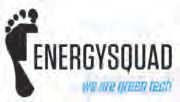Quick Bio
Name: Jon Stovall
Title: Co-Founder
Company: Energy Squad
As we learned at InfoComm 2013, control system installations represent a significant source of revenue for professional integrators, perhaps even more so than ever before. One of the mainstays of commercial control applications is lighting control. Integrators have access to countless lighting control solutions—each with its own unique application, end-user benefit, and opportunity for profits—but they end up leaving money on the table by not incorporating LED lighting into their portfolios.
Integrators have traditionally looked at bulbs and other lighting as byproducts that aren’t worth the time to actively “sell”. Part of that mindset is due to the fact that specifying, sourcing, and installing incandescent and CFL bulbs never could stand alone as a profitable revenue stream.

LED lighting eliminates those concerns and introduces a complete shift in the custom installation industry’s approach to lighting control. Rapid advancements in LED lighting technology have produced bulbs that work with virtually all control systems—perhaps even better than traditional bulbs—in addition to offering an integrator’s customers energy and cost savings. The benefits built into LED bulbs carry a higher price point, and their ease of installation offers a completely new product category, which integrators can capitalize upon for impressive sales opportunities.
So how can integrators add LED lighting into their sales mix? Let’s think of a few key points:
Hey, What if I Told You...
If an integrator already has their foot in the door, mentioning the benefits of LED lighting to customers is a natural segue. Obviously they don’t need LED bulbs, but a short conversation about how upgrading to LED bulbs in a residence or commercial property could reduce energy consumption by as much as 80 percent will almost always spark more conversation on the subject.
Add in that the customer will save time and money on maintenance costs—the average LED lifespan is equivalent to approximately 20 incandescent bulbs. If that doesn’t sell it, explain how local utility companies offer rebates and incentives for “going green” and they could end up paying next to nothing for the bulbs, and occasionally the system. Now you’ll have an LED lighting sale in the books.
All Bulbs Aren’t Created Equal
As technology evolves, product options expand. LED bulbs come in all shapes, colors, and sizes, but, as is the case with most products, you get what you pay for.
“Off-the-shelf” LED bulbs may lead to disappointment. They look nothing like a traditional bulb and they also range in quality of color and light output, leading to unhappy clients every time. Additionally, many off-the-shelf bulbs will not work properly with control systems because they lack true dimming capabilities.
In order to maximize the opportunities of LED lighting, it’s critical that integrators properly specify and source the best possible bulbs for each specific application.
It Takes One Integrator to Screw in a Light Bulb
By nature, the custom installation industry has always had a challenge with pulling off the great demo. An integrator can’t walk into a client’s business, rip out all of the speakers, and install a new multi-zone audio system just to illustrate how it works in the hopes of a potential sale.
With LED lighting, integrators can literally screw in a light bulb and show any customer how great it looks. It’s easy to point out how easily they are immediately cutting energy consumption (read: saving money). If the customer doesn’t like it, simply unscrew it and replace it with the old bulb.
Keeping a great demo kit of LED lighting solutions is not only cost-effective and easy to use for integrators, but we’ve found that it’s almost always a deal-closer.
Jon Stovall is the co-founder of Energy Squad (www.energysquad.com), the custom electronics industry’s first green tech distributor.











